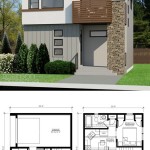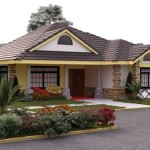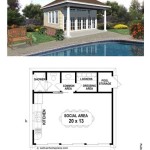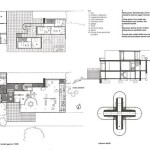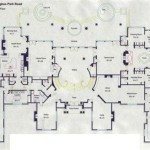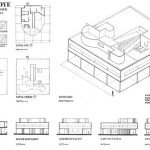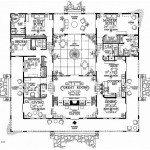Courtyard Style Garage House Plans: A Comprehensive Guide
Courtyard style garage house plans represent a unique and increasingly popular architectural trend, blending the functionality of a garage with the aesthetic appeal and privacy of a central courtyard. These plans offer a compelling solution for homeowners seeking to maximize space, enhance outdoor living, and create a distinctive property design. Understanding the key elements, benefits, and design considerations associated with courtyard style garage house plans is crucial for anyone considering this architectural approach.
Traditionally, a courtyard house design involves a dwelling surrounding an open-air space, offering seclusion and a sense of tranquility. Incorporating a garage into this design adds a layer of practicality, providing convenient parking and storage while maintaining the integrity of the courtyard concept. The garage can be integrated seamlessly into the overall design, either as an attached or detached structure, contributing to the overall aesthetic and functionality of the property.
Key Point 1: Defining Characteristics and Benefits of Courtyard Style Garage House Plans
Courtyard style garage house plans are characterized by several defining features, including a central, enclosed outdoor space, strategic placement of the garage, and a focus on privacy and natural light. The courtyard itself serves as a multi-functional area, suitable for relaxation, entertainment, gardening, or even a private outdoor dining space. The garage's integration can range from a simple, attached structure to a more elaborate design incorporating living spaces above or adjacent to the parking area.
One of the primary benefits of this design is enhanced privacy. The courtyard, enclosed by the house and/or garage structures, provides a secluded outdoor space shielded from the street and neighboring properties. This allows for greater freedom and enjoyment of outdoor activities without the feeling of being exposed. Furthermore, the courtyard design promotes natural light and ventilation, as the open space allows sunlight to penetrate deeper into the interiors of the house and facilitates cross-ventilation, contributing to a more comfortable and energy-efficient living environment.
Another significant advantage is the enhanced curb appeal and property value. Courtyard style homes often possess a unique and sophisticated aesthetic that sets them apart from conventional housing designs. The integration of the garage into the overall design, rather than simply being an afterthought, can significantly enhance the property's visual appeal and increase its perceived value. The seamless blend of indoor and outdoor living spaces also adds a layer of desirability for potential buyers.
From a functional perspective, courtyard style garage house plans offer flexibility in terms of layout and spatial organization. The central courtyard can serve as a focal point around which the living spaces are arranged. This allows for a more intuitive and efficient flow of movement within the house. The garage, depending on its design, can also provide additional storage space, workshop area, or even a secluded office or guest suite.
Consider also the environmental benefits. Courtyards facilitate natural cooling through shading and ventilation. The sheltered area also provides a microclimate suitable for a wider range of plants, promoting biodiversity and creating a more pleasant and sustainable living environment. Rainwater harvesting becomes easier to implement, with runoff directed towards the courtyard and potentially stored for irrigation purposes.
Key Point 2: Design Considerations and Planning
Designing a courtyard style garage house requires careful consideration of several factors, including site orientation, climate, building codes, and the homeowner's specific needs and preferences. The orientation of the courtyard is crucial for maximizing sunlight exposure and minimizing the impact of prevailing winds. In warmer climates, shading the courtyard during the hottest parts of the day is essential to maintain a comfortable temperature.
Building codes and zoning regulations may impose restrictions on building height, setbacks, and lot coverage. It is essential to consult with local authorities and a qualified architect or building designer to ensure that the proposed design complies with all applicable regulations. Furthermore, the design should take into account the specific climate and environmental conditions of the location. For example, in areas prone to heavy rainfall, adequate drainage systems are crucial to prevent waterlogging in the courtyard.
The size and shape of the courtyard itself should be carefully considered in relation to the overall size of the house and garage. A courtyard that is too small may feel cramped, while one that is too large may feel impersonal and difficult to maintain. The shape of the courtyard can also influence the flow of movement and the aesthetic appeal of the design. Common shapes include square, rectangular, L-shaped, and U-shaped courtyards, each offering its own unique advantages and disadvantages.
The materials used in the construction of the house and garage should be chosen carefully to complement the overall design and withstand the local climate. Durable and weather-resistant materials are essential for exterior surfaces, while sustainable and energy-efficient materials can help to reduce the environmental impact of the building. The choice of landscaping materials for the courtyard is also important, as it can significantly affect the ambiance and functionality of the space.
Accessibility is a critical design consideration. The plan should incorporate pathways and entrances that are easily accessible to individuals with mobility impairments. This may involve incorporating ramps, wider doorways, and smooth surfaces throughout the house and courtyard. The design should also consider the placement of lighting fixtures to ensure adequate illumination and safety, particularly during nighttime hours.
Key Point 3: Material Selection and Garage Integration
The selection of materials plays a crucial role in the aesthetic and functional success of a courtyard style garage house. The exterior materials should not only be visually appealing but also durable and resistant to the specific climate conditions of the location. Common choices include brick, stone, stucco, wood siding, and metal cladding. The material palette should create a cohesive and harmonious look that integrates the house and garage into the surrounding landscape.
The garage can be integrated into the overall design in several ways. An attached garage can be seamlessly connected to the house, providing direct access to the living spaces. This option is particularly convenient in inclement weather. A detached garage, on the other hand, can offer greater privacy and sound insulation, as well as the flexibility to position it strategically on the property. A detached garage can also be designed as a separate structure with its own distinct architectural style, adding visual interest to the overall design.
The garage door is a prominent feature of the design and should be chosen carefully to complement the overall aesthetic. Options include traditional roll-up doors, carriage-style doors, and modern glass-paneled doors. The color and material of the garage door should coordinate with the other exterior materials of the house and garage. Automated garage door openers provide convenience and security, allowing homeowners to easily open and close the garage door from inside the house or from a remote location.
The interior of the garage can be customized to suit the homeowner's specific needs. Options include adding storage cabinets, workbenches, and shelving units to maximize space and organization. The garage can also be insulated and heated to provide a comfortable workspace during the winter months. The lighting in the garage should be adequate for both parking and working, with a combination of overhead and task lighting.
Consider advanced features such as electric vehicle (EV) charging stations. As electric vehicles become increasingly popular, incorporating a charging station into the garage can be a valuable amenity. The electrical system should be properly sized to accommodate the charging station, and the location of the charging station should be convenient for both charging and parking the EV.
Ultimately, the design of a courtyard style garage house plan requires a holistic approach that integrates the functional requirements of the garage with the aesthetic and lifestyle considerations of the homeowner. By carefully considering these factors, it is possible to create a unique and beautiful home that seamlessly blends indoor and outdoor living spaces.

Plan 510028wdy Country House With Courtyard Garage And Bonus Above Plans Farmhouse

Plan 22538dr New American House With Courtyard Garage Game Room Above Farmhouse Style Plans

Plan 510028wdy Country House With Courtyard Garage And Bonus Above Style Plans Craftsman Farmhouse

Florida Style House Plan With Courtyard Entry Garage 59177nd Architectural Designs Plans

Parkside Ranch Home L Shaped House Plans Garage Courtyard

Angled Courtyard Entry Garage Modern Farmhouse Home Plans

Courtyard House Plans Italian Style With Circular Stairs

House Plans With A Courtyard The Designers

Plan 10507 Creative Layout

Courtyard Floor Plans Bing Images House Bungalow

